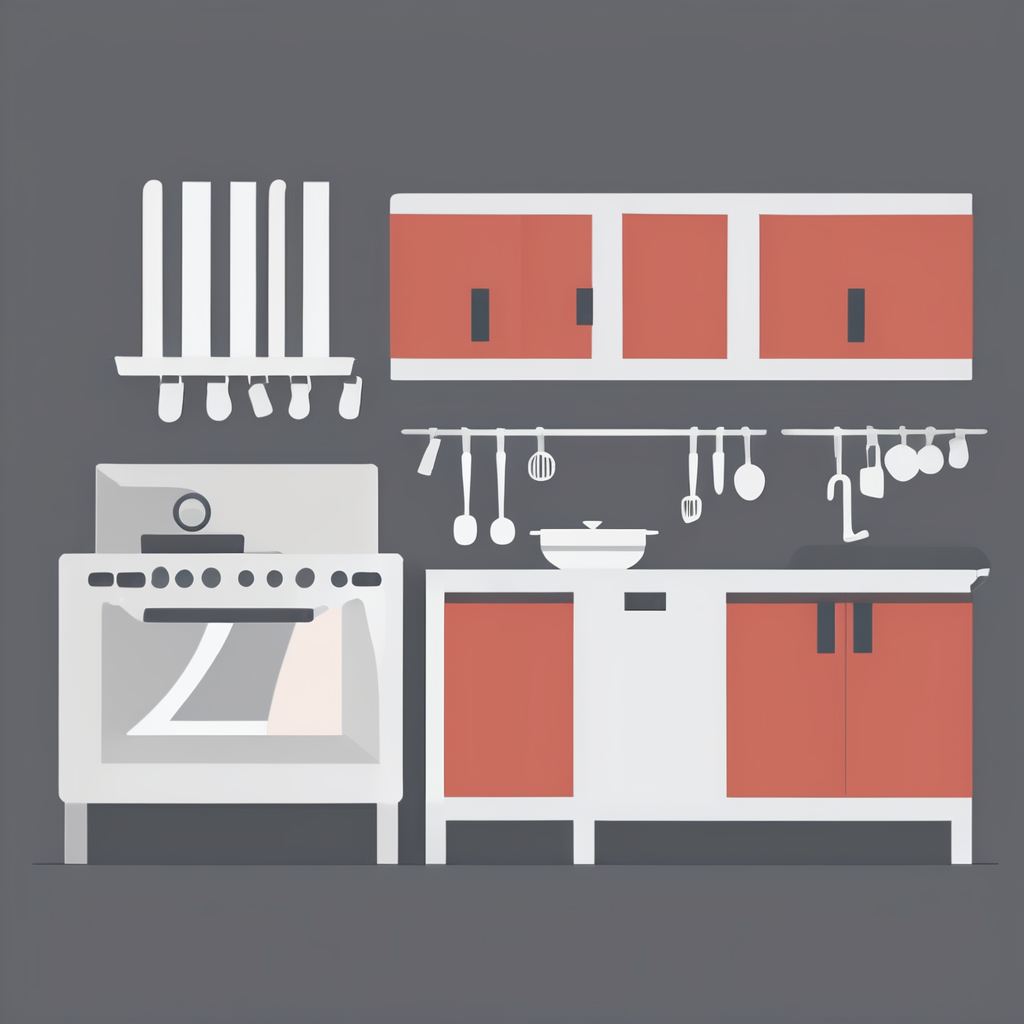Primary challenges affecting kitchen efficiency in UK restaurants
Kitchen efficiency is a critical factor for the success of UK restaurants, as it directly impacts service speed, food quality, and customer satisfaction. The hospitality industry challenges centres largely around managing resources effectively under pressure. Among the most common obstacles are staffing shortages, which reduce kitchen productivity and increase wait times.
Supply chain disruptions also pose significant challenges. Delays or inconsistencies in ingredient deliveries affect menu availability and kitchen workflow. Additionally, outdated or malfunctioning kitchen equipment hinders food preparation speed and consistency, further lowering efficiency.
Additional reading : Exploring sustainable innovations in uk kitchen bars: eco-friendly practices unveiled
Regulations in the UK hospitality sector, including strict health and safety standards, add complexity to daily operations. While these rules are essential, adherence often requires extra time and resources, which can strain already tight schedules.
Overcoming these obstacles is essential to boosting kitchen efficiency and maintaining competitiveness in a demanding market. Focusing on strategic staffing, reliable supply chains, equipment maintenance, and efficient compliance can significantly improve outcomes for UK restaurants.
Also to read : Exploring the uk’s favorite culinary delights: top dishes in british eateries
Impact of staffing shortages on kitchen operations
Staffing shortages in kitchens have intensified amid the ongoing restaurant labour crisis. In the UK hospitality staffing sector, many establishments report reduced efficiency and longer service times due to a lack of skilled workers. This gap disrupts kitchen workflow, forcing remaining staff to juggle multiple roles, increasing stress and the risk of errors.
Key causes include Brexit, which significantly reduced the pool of available EU workers. Wage pressures also complicate recruitment, as many kitchens struggle to offer competitive pay that matches rising living costs. Recruitment challenges are further compounded by a decline in hospitality’s appeal as a career, creating persistent vacancies.
Short-term solutions focus on streamlining operations; for instance, simplifying menus reduces preparation time and eases staff workload. Some restaurants invest in training existing team members to cover multiple roles or hire temporary workers to plug holes swiftly. Industry strategies increasingly emphasise automation technologies and improved staff retention through better working conditions to mitigate ongoing kitchen staff shortages more sustainably.
Supply chain disruptions in the UK restaurant sector
Supply chain issues have notably impacted the UK restaurant sector during 2023 and 2024. Food delivery delays have become increasingly common, resulting from disruptions in global logistics and fluctuating demand cycles. Such delays affect restaurant stock management, making it challenging for establishments to maintain consistent ingredient availability. This scarcity can undermine menu consistency and food quality, as chefs may resort to substituting key ingredients or adjusting recipes last minute.
To mitigate risks, many restaurants are adopting strategies such as local sourcing, which reduces dependency on distant suppliers and shortens supply chains. Diversified suppliers are also crucial; relying on multiple vendors lessens the impact if one supplier faces disruptions. Effective stock management tools help restaurants monitor inventory closely, allowing for agile responses to shortages. These combined approaches enhance resilience against ongoing supply chain issues in the UK restaurant sector, preserving quality and customer satisfaction despite external challenges.
Outdated kitchen equipment as a barrier to efficiency
Outdated commercial kitchen equipment remains a significant hurdle for many UK kitchens, directly affecting restaurant productivity. Older appliances often fail to maintain consistent temperatures, slowing prep times and jeopardising food safety standards. Such unreliability causes frequent breakdowns, translating into costly maintenance and repair expenses that strain operational budgets.
Technology upgrades present a clear solution. Modern equipment enhances speed, precision, and energy efficiency, reducing both prep times and safety risks. For example, businesses investing in updated ovens and refrigeration units report measurable gains in workflow consistency and lower energy bills. One case study revealed a restaurant achieving a 20% increase in prep efficiency after replacing legacy fryers and mixers, illustrating the strong return on investment (ROI) these improvements can deliver.
Ultimately, embracing new technology is crucial. By prioritising technology upgrades in their commercial kitchen equipment, restaurants not only boost productivity but also safeguard food quality and operational resilience—key factors for sustaining success in the competitive hospitality industry.
Workflow bottlenecks and layout challenges
Efficient restaurant kitchen design is crucial to prevent common workflow bottlenecks that can hinder smooth operation. Ineffective layout often results in cramped spaces, forcing staff into awkward movements that slow down food preparation and service. When kitchen zones—such as prep, cooking, and plating—are poorly arranged, it disrupts kitchen workflow optimisation and increases the likelihood of accidents or errors.
Communication breakdowns during service also contribute significantly to delays. When orders are unclear or staff cannot easily exchange information, it compounds the effect of existing layout issues. For example, if the expeditor cannot efficiently signal cooks about order modifications, the entire workflow can stall.
Moreover, staff training plays an essential role in overcoming these challenges. Well-trained employees understand optimal routes and timing, minimizing interruptions caused by layout constraints and improving overall efficiency. Targeted training can also teach staff to adapt quickly, compensating for design flaws and maintaining a steady pace even during peak hours. Addressing these elements together can significantly enhance restaurant kitchen productivity.
Navigating regulatory compliance and food safety mandates
Staying current with food safety regulations in the UK is crucial for any kitchen aiming to meet legal requirements and protect customers. Recent changes have intensified the focus on hygiene, temperature controls, and allergen management. These updates mean UK kitchen compliance now demands more than routine checks—it involves comprehensive record-keeping that can strain daily operations.
Restaurants face operational pressures to maintain meticulous logs demonstrating adherence to these standards. Failure to comply not only risks legal penalties but also affects reputation. To ease this burden, many kitchens are adopting digital tools that streamline monitoring and documentation. These platforms automatically track cleaning schedules, temperature logs, and staff training records, reducing human error and freeing managers to focus on service quality.
Additionally, targeted training programs empower staff to understand and apply the latest food safety protocols effectively. Regular refreshers ensure compliance isn’t just a formality but a practised routine. By combining technology with thorough training, UK kitchens can confidently navigate evolving restaurant legal requirements and sustain high standards with greater efficiency.
Technology adoption and digital transformation in UK kitchens
Embracing restaurant technology and kitchen automation has become essential for modern UK kitchens aiming to boost efficiency. However, several barriers slow down adoption. High upfront costs and staff training requirements often deter smaller operators. Additionally, concerns about system integration with existing infrastructure cause hesitation.
Despite these challenges, examples of successful digital solutions UK abound. Integrated POS systems streamline order management, reducing errors and saving time. Inventory software automates stock tracking, minimizing waste and controlling expenses. Smart appliances enable precise cooking control and real-time monitoring, improving consistency.
UK restaurants weigh these costs against operational gains carefully. While initial investments can be significant, many report increased staff productivity and improved customer satisfaction. Gradual implementation and choosing scalable solutions help balance expenses. As technology evolves, more affordable, user-friendly tools will likely facilitate wider adoption, driving the digital transformation in UK kitchens further.


